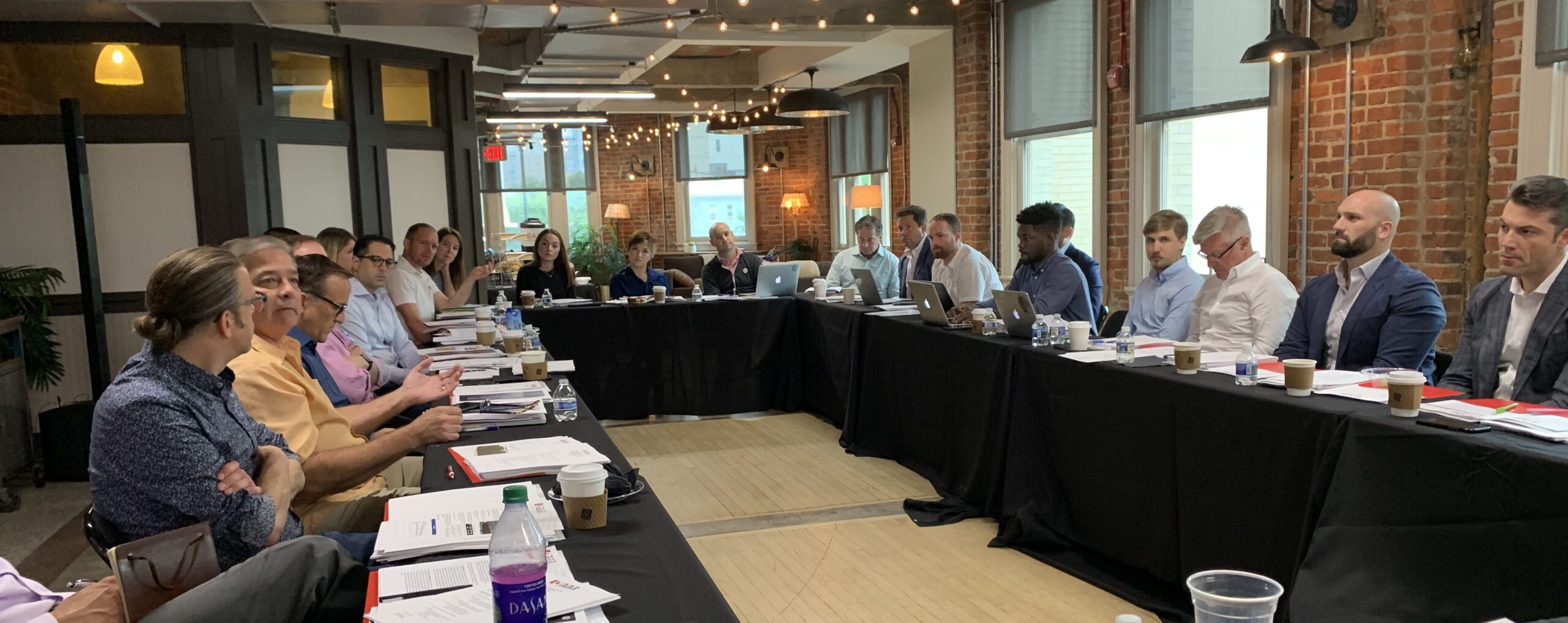
Last week the OAAA Innovations Committee met for its annual Summer Camp in Washington, DC. The forward-looking group meets each July for two days in our nation’s capital to discuss the future of OOH and how tech can advnace industry initiatives.
One of the pressing topics of discussion was programmatic OOH. It was a “hot topic” at the last OOH Media Conference + Expo in Las Vegas and will continue to evolve as an important enabler for growing the OOH business in coming years. The committee recently presented a series of webinars on the topic of programmatic buying and selling. Listen to them here.
As the OOH industry continues to explore how programmatic will become more integral to daily business transactions, it is important to understand how automation will impact campaign planning and omni-channel evaluation. The implied outcome is that programmatic OOH will simplify the buying process making it easier to transact through automated processes. It should also open new revenue streams for OOH that are currently allocated to digital media.
As the OOH Industry continues to evolve and develop approaches to programmatic buying stakeholders will naturally look to online models for inspiration. Alignment to digital programmatic processes is useful to a point. But every media channel has unique characteristics and it is important that OOH stays true to its core strengths by delivering audiences in ways only OOH advertising can achieve.
Tribe Mentality
One of the most obvious differences between digital media (online, mobile, video) and OOH is the scope of audience delivery. Online is a one-to-one addressable medium with messages sent directly to individual devices like smartphones. DOOH is a one-to-many medium reaching groups of people when messages are sent to screens. Because of data OOH has become highly targeted. Data allows OOH companies to accurately target like-minded groups of people or tribes. This practice makes OOH highly efficient at impacting the right audiences in a way that builds reach.
Mixing the reach of targeted OOH with the precision of digital produces powerful ad campaigns. It’s no wonder many of the top OOH spenders are online brands like Google, Amazon, and Facebook. The virtual world recognizes the vital role OOH plays in reaching real people.
Go West Young Man…East, North, or South
Anyone buying or selling OOH understands audience mobility is an important factor to consider when planning OOH campaigns. Mobility adds an entirely new level of consideration when applied to programmatic strategies. OOH audiences cluster and change throughout the day. Understanding where groups of people go, how they merge and dissipate, why they congregate all factor into OOH programmatic models. The mobility overlay is not a consideration for online media.
X…Marks the Spot
Like mobility, location is an important factor when considering OOH programs. Because OOH is part of the nation’s urban and suburban infrastructure, location matters. Of course, as the OOH industry evolves from selling dots on a map to selling audiences, it could be argued that location will be a less critical factor when evaluating OOH campaigns. After all, if a campaign objective is to achieve specified levels of targeted impressions does location really matter that much? Maybe not. But location will always matter to some advertisers. It all depends on campaign objectives. Is the advertiser trying to reach a specific audience based on a demographic profile or is the objective to reach people heading into the regional airport? Sometimes location will matter and other times it won’t matter so much.
Thea automation of buying and selling transactions is a necessary evolution that will improve the way OOH is integrated within broader media strategies and it’s happening. The OOH industry works collectively to find new and better ways to prove the effectiveness of the medium. A new Data Use and Analytics Committee will meet in August to begin laying the foundation for standards, definitions, and protocols that will support the overall objective of making OOH easier to plan and buy. The underpinnings of common practices are the first step for making OOH more of a core media buy, establishing necessary transactional rules that serve programmatic tactics, and ultimately allows OOH to integrate into omnichannel campaigns.
Published: July 29, 2019